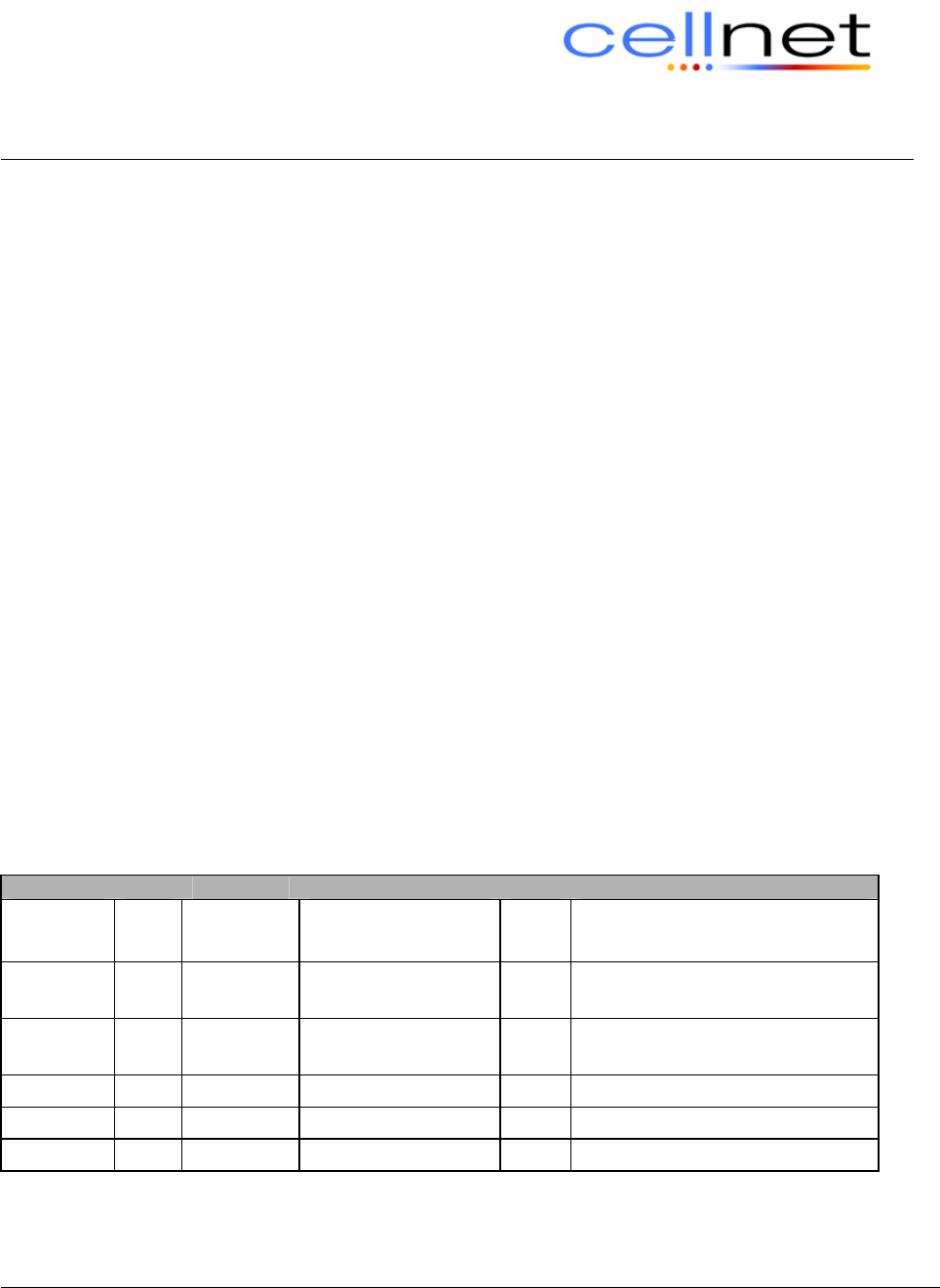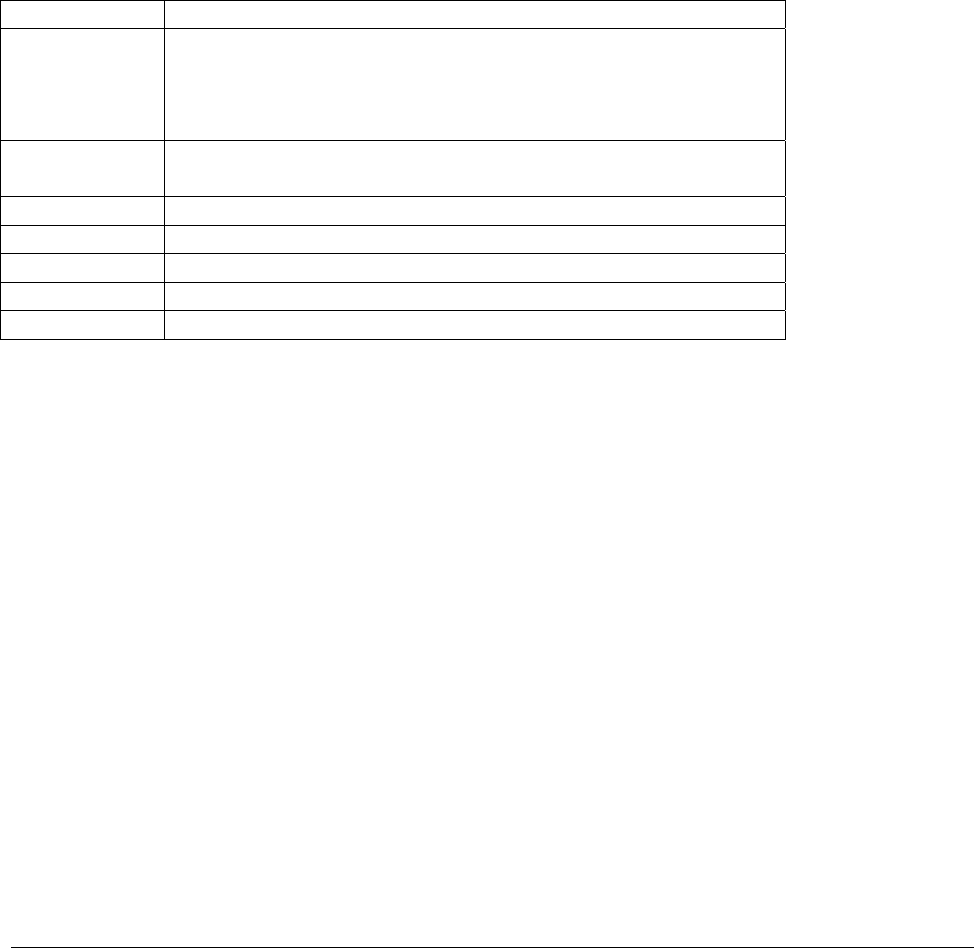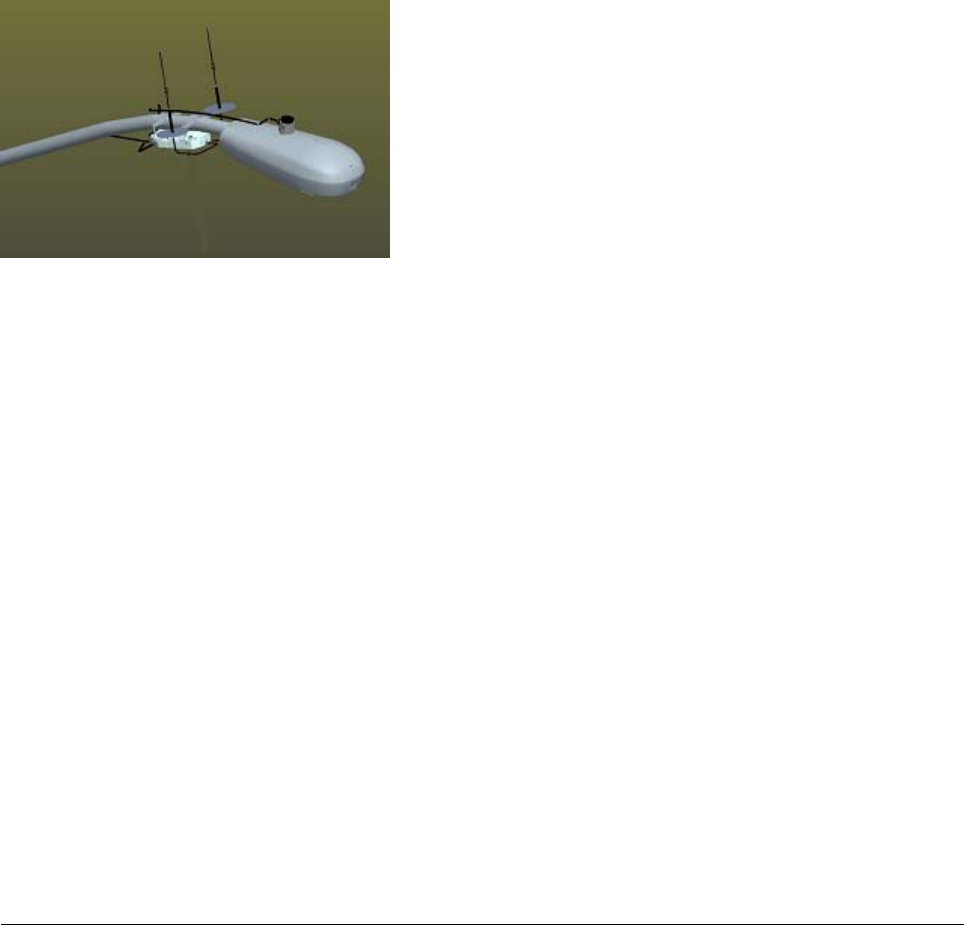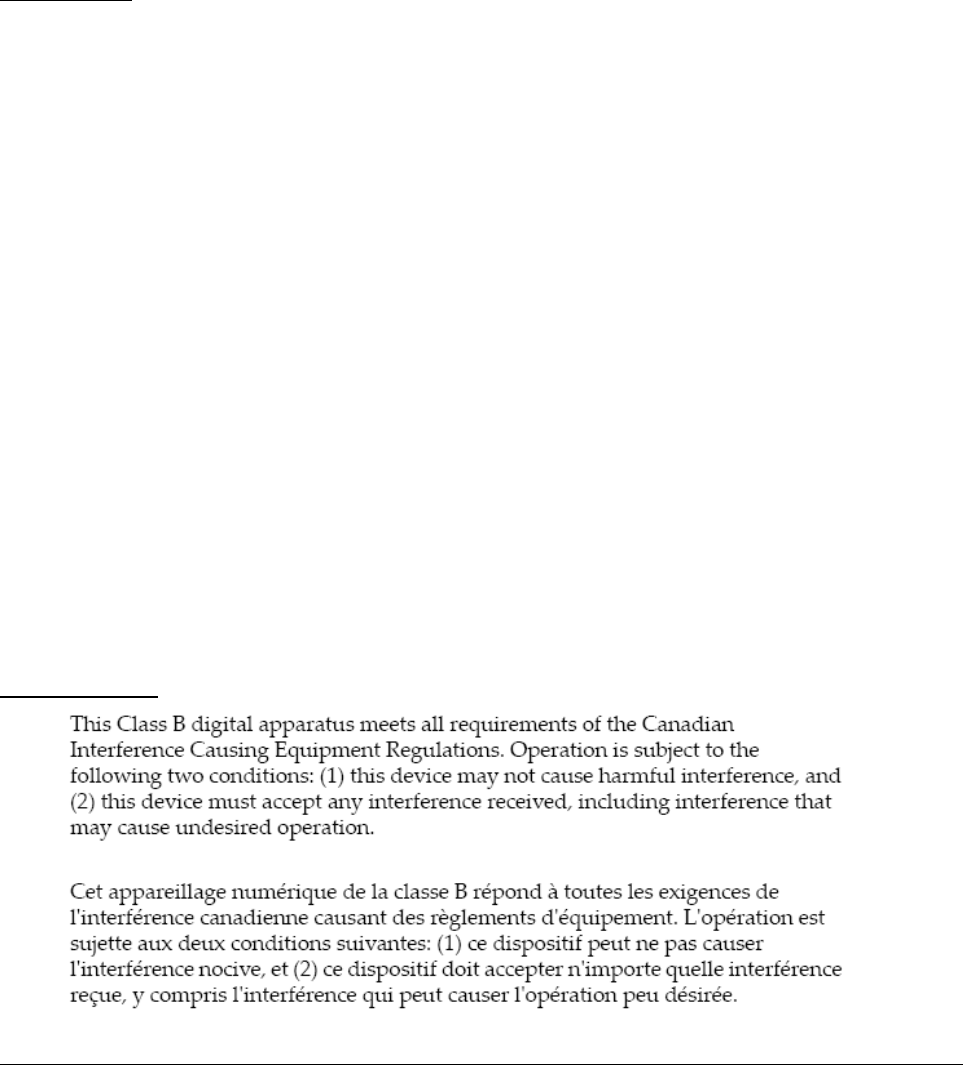Landis Gyr Technology CG6R1S1 1-WAY REPEATER User Manual USERS MANUAL
Landis+Gyr Technology, Inc. 1-WAY REPEATER USERS MANUAL
USERS MANUAL

5015 B.U. Bowman Drive Buford, GA 30518 USA Voice: 770-831-8048 Fax: 770-831-8598
Certification Exhibit
FCC ID: R7PCG6R1S1
IC: 5294A-CG6R1S1
FCC Rule Part: 15.247
IC Radio Standards Specification: RSS-210
ACS Report Number: 08-0040-15C
Manufacturer: Cellnet Technology, Inc.
Model: 1-Way Repeater
Manual

Title: 1-Way Repeater Installation and Setup
Doc. Number: 97-1077 Revision: AB Page 1 of 11
PROPRIETARY INFORMATION NOTICE:
THIS DOCUMENT CONTAINS TRADE SECRETS AND CONFIDENTIAL INFORMATION OF CELLNET AND SHALL NOT
BE DUPLICATED IN WHOLE OR IN PART OR USED OR DISCLOSED FOR ANY PURPOSE OTHER THAN THAT
APPROVED BY CELLNET.
© Cellnet 2008. All rights reserved.
1-Way Repeater Installation and Setup Guide
Revision History
ECO/ECN Rev Date Author Page Description
ECO-
047988 AA 4/2/08 D. Fincannon
All Initial Release
ECO-
048047 AB 4/18/08 D. Fincannon 11 Incorporate comments from test
house
ECO-
048100 AC 5/2/08 D. Fincannon 2,4 Add comments on installation
and RF power

1-Way Repeater Setup
97-1077 rev AB Page 2 of 11
PROPRIETARY INFORMATION NOTICE:
THIS DOCUMENT CONTAINS TRADE SECRETS AND CONFIDENTIAL INFORMATION OF CELLNET AND SHALL NOT
BE DUPLICATED IN WHOLE OR IN PART OR USED OR DISCLOSED FOR ANY PURPOSE OTHER THAN THAT
APPROVED BY CELLNET.
© Cellnet 2008. All rights reserved.
Page 2 of 11
Introduction
Overview
The Cellnet 1 way repeater (BLTr) is intended to be a low cost way to extend the
coverage of an MCC in rural (low customer density) areas.
Cellnet’s current 1-way technology utilizes the BLT radio for communication over
the wireless LAN. The Cellnet 1-way Repeater is designed to reduce the
network costs associated with 1-way electric, water, and/or gas meter
deployments for low density areas. The 1-Way Repeater will utilize the latest
firmware enhancements available for the BLT repeater radio, designed to
increase the performance of the existing BLT radio.
The BLT repeater is a project aimed at stretching the RF coverage capability of
the Cellnet network at a cost that is not prohibitive to the company or the
customer.
Increased coverage for more rural areas is planned to be obtained by using 1-
Way Repeater to extend the LAN coverage of each MCC. The present RF range
of a MCC is approximately 0.4 miles in radius that equates to roughly 0.5 square
miles of area. By using 1-Way Repeater for LAN extension, the area of coverage
is expected to be extended by an order of magnitude to 5 square miles. In other
words using an average of 10 1-Way Repeaters reporting to each MCC, we
should be able to increase the radius of coverage to approximately 5 square
miles.
The 1 way repeater forwards Cellnet 1-way packets received on 917.58 Mhz /
Spread Channel #1 at 911.58 Mhz / spread channel #2. The MCC is reconfigured
to receive packets on 911.58 Mhz and spread channel #2. Repeaters are
installed around the MCC to extend its coverage area. The 1-way repeater
should not require device specific configuration other than configuring it with a
unique LAN address if heart beat packets are required to monitor its proper
operation.
The 1-Way Repeater is built using a standard BLT transceiver and modifying it
with SW so that it operates as described in this document. These modifications
also result in a minor reduction in output power to a nominal 25.5 dBm at 911.58
MHz from the nominal 27 dBm at 917.58 MHz of the standard BLT radio.

1-Way Repeater Setup
97-1077 rev AB Page 3 of 11
PROPRIETARY INFORMATION NOTICE:
THIS DOCUMENT CONTAINS TRADE SECRETS AND CONFIDENTIAL INFORMATION OF CELLNET AND SHALL NOT
BE DUPLICATED IN WHOLE OR IN PART OR USED OR DISCLOSED FOR ANY PURPOSE OTHER THAN THAT
APPROVED BY CELLNET.
© Cellnet 2008. All rights reserved.
Page 3 of 11
The 1-way packets transmitted by the BLTr are processed by the Frame
manager and send to the BLTr agent.
The BLTr agent receives the Admin packet from the device and stores the
information pertaining to the heart beat packet.
The BLTr agent sends out periodic ASAP messages with the contents of the
heart beat packet. This is controlled by parameters in the EEPROM configuration
where the default sending messages is turned ON.
The BLTr agent logs a periodic message in the event log of the system controller.
Acronyms and definitions
CIF MCC Code Image File
MCC MicroCell Controller – a device that collects data and
events from RF LAN devices for storage in the object
database; communicates with the System Controller or
the CellMaster and the RF WAN.
Cell
Manager A Sun workstation configured to run CellNet software
LSB Least Significant Byte
MSB Most Significant Byte
ASAP As Soon As Possible Messages
CIA Cellnet Internal Address
DMS Distributed Messaging System

1-Way Repeater Setup
97-1077 rev AB Page 4 of 11
PROPRIETARY INFORMATION NOTICE:
THIS DOCUMENT CONTAINS TRADE SECRETS AND CONFIDENTIAL INFORMATION OF CELLNET AND SHALL NOT
BE DUPLICATED IN WHOLE OR IN PART OR USED OR DISCLOSED FOR ANY PURPOSE OTHER THAN THAT
APPROVED BY CELLNET.
© Cellnet 2008. All rights reserved.
Page 4 of 11
Installation
The 1-Way Repeater is packaged with two antennas and two ground disks. A mounting
kit is available that contains the mounting kit to install the radio and the RF cables to the
antennas. This installation is similar to other Cellnet products. The repeater is attached to
the streetlight arm and powered via the streetlight photocell adapter cable ordered with
the repeater. No additional SW or configuration is required.
Equipment Required
• 45-1049: mounting kit that can be used with one way repeater. Antennas and antenna
ground disk supplied with 1-Way Repeater
• Recommended torque settings for ¼” HW: 45 in-lb
• Serial cable: None expected to be used in normal operation
• 103826-000: AC power cable if attached to photocell, other installations possible
Note: Professional installation of the 1-Way Repeater is required.
Low Density Deployment
The 1-Way Repeater could be used to include a rural group of meters currently read by
manual means. This allows network costs to be reduced.

1-Way Repeater Setup
97-1077 rev AB Page 5 of 11
PROPRIETARY INFORMATION NOTICE:
THIS DOCUMENT CONTAINS TRADE SECRETS AND CONFIDENTIAL INFORMATION OF CELLNET AND SHALL NOT
BE DUPLICATED IN WHOLE OR IN PART OR USED OR DISCLOSED FOR ANY PURPOSE OTHER THAN THAT
APPROVED BY CELLNET.
© Cellnet 2008. All rights reserved.
Page 5 of 11
MCC Setup
The following commands are needed to set up the receiving MCC. The settings of the
MCC processor board need to be changed. Changing the settings in the BLT radio alone
will not result in permanent changes and the processor will change the BLT back to the
original settings. Note that this MCC will only receive from 1-Way Repeaters because it
will only receive at 911.58 MHz.
In order to set up the MCC, follow the following instructions. Entries are shown in red.
Connect to the MCC using Hyperterm or MCC Term if the GUI features are not used.
Type <unlock>
Console unlocked...
MCC Main Menu
i Display firmware version info
t CellNet Time and Real Time Clock (RTC) menu...
a Application menu...
c Configuration (EEPROM) menu...
d Debug menu...
l Lock Console
m Toggle Terse Mode
Select option (? for menu): c
MCC860 EEPROM Configuration Menu
d Display all configuration items a page at a time
x Display all configuration items with no paging
D Display only new items
s Set specific items (choose from paged list)
n Set specific items by name or id number
a Interactively set all items (prompt for each one)
A Interactively set new items
e Interactively set all out-of-range items
E Interactively set out-of-range new items
r Set all items to defaults (no prompting)
R Set new items to defaults

1-Way Repeater Setup
97-1077 rev AB Page 6 of 11
PROPRIETARY INFORMATION NOTICE:
THIS DOCUMENT CONTAINS TRADE SECRETS AND CONFIDENTIAL INFORMATION OF CELLNET AND SHALL NOT
BE DUPLICATED IN WHOLE OR IN PART OR USED OR DISCLOSED FOR ANY PURPOSE OTHER THAN THAT
APPROVED BY CELLNET.
© Cellnet 2008. All rights reserved.
Page 6 of 11
f Set all out-of-range items to defaults
F Set out-of-range new items to defaults
S Save EEPROM cache to NAND File
G Get the EEPROM params from Nand
q Quit
Select option (? for menu): s
MCC860 EEPROM Configuration
[Note '*' indicates change requires Warm Boot; '+' requires Hot Boot]
[a] MCC ID (up to 15 characters): INCB011
[b] MCC serial number (up to 16 characters): 1000005
[c]+MCC WAN Stack Type (0=radio, 1=serial DMS, 2=serial MTP, 3=RAM WAN,
4=Tel WAN, 5=IP WAN, 6=FreeWave, 7=
Utilinet) [0..7;default=0]: 0
[d]*MCC DMS Net Address [1..4294967039;default=4294967038]: 600037
[e]*MCC DMS node address (normally 1) [1..65534;default=65534]: 12
[f]+Log manager's (and CTS's) DMS Net Address [1..4294967039;default=4294967039]:
23
[g]+Log manager's (and CTS's) DMS node address [1..65534;default=65534]: 254
[h]+Event manager's DMS Net Address [1..4294967039;default=4294967039]: 25
[i]+Event manager's DMS node address [1..65534;default=65534]: 256
[j] Event forwarding ODE timeout (seconds) [120..86400;default=1800]: 1800
[k] Event forwarding holdoff (seconds) [0..86400;default=120]: 120
[l]+Last ODE object id [1..2147483647;default=1]: 117350001
[m]*Minutes from GMT (0=GMT, 480=PST) [positive increments of 60] [-
720..720;default=480]: 360
[n]*Daylight savings type (0=none, 1=USA, 7=UK) [0..7;default=1]: 1
[o]+Lan transceiver hardware revision [0..255;default=0]: 0
[p]+Lan Rx squelch [0..255;default=0]: 1
[r]+Lan Rx frequency (3 MHz steps) [905.58..926.58;default=917.58]: 917.58
[s]+Lan Rx chipping sequence [1..6;default=1]: 1
[t]+Lan Rx Trip level (0 = use transceiver default) [0..255;default=0]: 0
[u]+Lan Rx antenna (0=normal, 1=fast, 2=fixed A, 3=fixed B) [0..3;default=0]: 0
<Look for letter corresponding to Lan Rx frequency and Lan Rx chipping sequence>

1-Way Repeater Setup
97-1077 rev AB Page 7 of 11
PROPRIETARY INFORMATION NOTICE:
THIS DOCUMENT CONTAINS TRADE SECRETS AND CONFIDENTIAL INFORMATION OF CELLNET AND SHALL NOT
BE DUPLICATED IN WHOLE OR IN PART OR USED OR DISCLOSED FOR ANY PURPOSE OTHER THAN THAT
APPROVED BY CELLNET.
© Cellnet 2008. All rights reserved.
Page 7 of 11
Select item to change, RETURN for next page, ESC to quit, TAB to redisplay: r
+Lan Rx frequency (3 MHz steps) [905.58..926.58;default=917.58]: 917.58
Enter new value, RETURN to skip, ESC to quit: 911.58
Select item to change, RETURN for next page, ESC to quit, TAB to redisplay: s
+Lan Rx chipping sequence [1..6;default=1]: 1
Enter new value, RETURN to skip, ESC to quit: 2
Select item to change, RETURN for next page, ESC to quit, TAB to redisplay:
Press <TAB> to redisplay
MCC860 EEPROM Configuration
[Note '*' indicates change requires Warm Boot; '+' requires Hot Boot]
[a] MCC ID (up to 15 characters): INCB011
[b] MCC serial number (up to 16 characters): 1000005
[c]+MCC WAN Stack Type (0=radio, 1=serial DMS, 2=serial MTP, 3=RAM WAN,
4=Tel WAN, 5=IP WAN, 6=FreeWave, 7=Utilinet) [0..7;default=0]: 0
[d]*MCC DMS Net Address [1..4294967039;default=4294967038]: 600037
[e]*MCC DMS node address (normally 1) [1..65534;default=65534]: 12
[f]+Log manager's (and CTS's) DMS Net Address [1..4294967039;default=4294967039]:
23
[g]+Log manager's (and CTS's) DMS node address [1..65534;default=65534]: 254
[h]+Event manager's DMS Net Address [1..4294967039;default=4294967039]: 25
[i]+Event manager's DMS node address [1..65534;default=65534]: 256
[j] Event forwarding ODE timeout (seconds) [120..86400;default=1800]: 1800
[k] Event forwarding holdoff (seconds) [0..86400;default=120]: 120
[l]+Last ODE object id [1..2147483647;default=1]: 117350001
[m]*Minutes from GMT (0=GMT, 480=PST) [positive increments of 60] [-
720..720;default=480]: 360
[n]*Daylight savings type (0=none, 1=USA, 7=UK) [0..7;default=1]: 1
[o]+Lan transceiver hardware revision [0..255;default=0]: 0
[p]+Lan Rx squelch [0..255;default=0]: 1
[r]+Lan Rx frequency (3 MHz steps) [905.58..926.58;default=917.58]: 911.58
[s]+Lan Rx chipping sequence [1..6;default=1]: 2
[t]+Lan Rx Trip level (0 = use transceiver default) [0..255;default=0]: 0
[u]+Lan Rx antenna (0=normal, 1=fast, 2=fixed A, 3=fixed B) [0..3;default=0]: 0
Select item to change, RETURN for next page, ESC to quit, TAB to redisplay:
Enter <ESC> to quit

1-Way Repeater Setup
97-1077 rev AB Page 8 of 11
PROPRIETARY INFORMATION NOTICE:
THIS DOCUMENT CONTAINS TRADE SECRETS AND CONFIDENTIAL INFORMATION OF CELLNET AND SHALL NOT
BE DUPLICATED IN WHOLE OR IN PART OR USED OR DISCLOSED FOR ANY PURPOSE OTHER THAN THAT
APPROVED BY CELLNET.
© Cellnet 2008. All rights reserved.
Page 8 of 11
MCC860 EEPROM Configuration Menu
d Display all configuration items a page at a time
x Display all configuration items with no paging
D Display only new items
s Set specific items (choose from paged list)
n Set specific items by name or id number
a Interactively set all items (prompt for each one)
A Interactively set new items
e Interactively set all out-of-range items
E Interactively set out-of-range new items
r Set all items to defaults (no prompting)
R Set new items to defaults
f Set all out-of-range items to defaults
F Set out-of-range new items to defaults
S Save EEPROM cache to NAND File
G Get the EEPROM params from Nand
q Quit
Select option (? for menu): q
You have changed parameters which require an MCC Hot Boot.
Are you ready to reset? (y/n): y
The following comes back up after the MCC resets
Cellnet
MicroCell Controller
14.0.06_860,[v14035-mcc-p14.17-cmgcs@pagoda],01-17-08@17:05:16
Warm starting all MCC860 tasks...
WAST DOGY PCMT PTST SCCT PFMT DIAG RSTP
DLTT ODES OTBS CALA TOUA OD1A TOMM MLPA
ASAP RFLA RDSA RSTT DTTA RCAT TIME MCCA
MCAA OFTT EVST LSTA TOAT STMT PFTT SRAT
DTOA BLTR
34 tasks started, recovering ODE database...,
1206038499,12 Reset flag RESET_CONFIG_CHANGE
1206038499,12 [ BANK B ] Reset msg "EEPROM changes require Hot Boot"
MCC860 Waiting for Recovery End

1-Way Repeater Setup
97-1077 rev AB Page 9 of 11
PROPRIETARY INFORMATION NOTICE:
THIS DOCUMENT CONTAINS TRADE SECRETS AND CONFIDENTIAL INFORMATION OF CELLNET AND SHALL NOT
BE DUPLICATED IN WHOLE OR IN PART OR USED OR DISCLOSED FOR ANY PURPOSE OTHER THAN THAT
APPROVED BY CELLNET.
© Cellnet 2008. All rights reserved.
Page 9 of 11
MCC860 Initialization Complete
Console locked...

1-Way Repeater Setup
97-1077 rev AB Page 10 of 11
PROPRIETARY INFORMATION NOTICE:
THIS DOCUMENT CONTAINS TRADE SECRETS AND CONFIDENTIAL INFORMATION OF CELLNET AND SHALL NOT
BE DUPLICATED IN WHOLE OR IN PART OR USED OR DISCLOSED FOR ANY PURPOSE OTHER THAN THAT
APPROVED BY CELLNET.
© Cellnet 2008. All rights reserved.
Page 10 of 11
Compliance
FCC Class B:
“NOTE: This equipment has been tested and found to comply with the limits for a Class
B digital device, pursuant to Part 15 of the FCC Rules. These limits are designed to
provide reasonable protection against harmful interference in a residential installation.
This equipment generates, uses and can radiate radio frequency energy and, if not
installed and used in accordance with the instructions, may cause harmful interference to
radio communications. However, there is no guarantee that interference will not occur in
a particular installation. If this equipment does cause harmful interference to radio or
television reception, which can be determined by turning the equipment off and on, the
use is encouraged to try to correct the interference by one or more of the following
measures:
• Reorient or relocate the receiving antenna.
• Increase the separation between the equipment and receiver.
• Connect the equipment into an outlet on a circuit different from that to which the
receiver is connected.
• Consult the dealer or an experienced radio/TV technician for help.”
Warning: Changes or modifications to this device not expressly approved by Cellnet
could void the user’s authority to operate the equipment.
RF Exposure
In accordance to FCC requirements of human exposure to radiofrequency fields, the
radiating element shall be installed such that a minimum separation distance of 20 cm.
Industry Canada

1-Way Repeater Setup
97-1077 rev AB Page 11 of 11
PROPRIETARY INFORMATION NOTICE:
THIS DOCUMENT CONTAINS TRADE SECRETS AND CONFIDENTIAL INFORMATION OF CELLNET AND SHALL NOT
BE DUPLICATED IN WHOLE OR IN PART OR USED OR DISCLOSED FOR ANY PURPOSE OTHER THAN THAT
APPROVED BY CELLNET.
© Cellnet 2008. All rights reserved.
Page 11 of 11
“To reduce potential radio interference to other users, the antenna type and its gain
should be so chosen that the equivalent isotropically radiated power (e.i.r.p.) is not
more than that permitted for successful communication.”
“This device has been designed to operate with the antennas listed below, and having a
maximum gain of 3 dBi. Antennas not included in this list or having a gain
greater than 3 dBi are strictly prohibited for use with this device. The required antenna
impedance is 50 ohms.”
Equipment manufacturers shall provide proper values of antenna gain and antenna
impedance to comply with the applicable RSS.
Cellnet provides an antenna with the 26-1146 1-Way Repeater and recommends that this
antenna be used when the 1-Way Repeater is installed.
Antennas approved for use with this product:
01-1239 ANTENNA,3dB GAIN,ASPG918